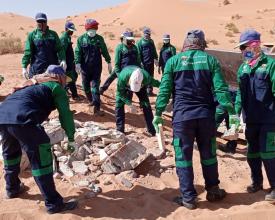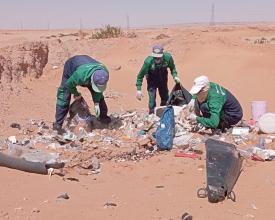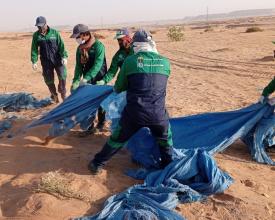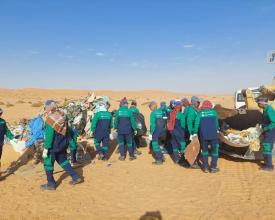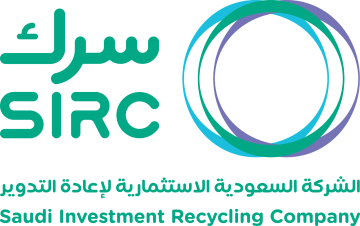
Reviving Nature: The Cleanup Success Story of King Abdulaziz Royal Nature Reserve

Set over an area of 28,345 km², the King Abdulaziz Royal Nature Reserve (KARNR) is situated northeast of Riyadh, in the Kingdom of Saudi Arabia. Extending to the Al-Arma Mountains and down to several meadows, valleys, and reefs, it mostly encompasses two regions: Rawdat Al-Tanhat, Al-Khafs, Noura, Al-Hqaqa, the western portion of the Al-Summan plateau, and the Ad-Dahnaa’ desert.
In 2018, the reserve was created to protect plant and animal species, and preventing poaching, overgrazing, and logging. Various kinds of plants, animals, and microbes cohabit in the reserve's varied landscape, including valleys, meadows, plateaus, mountains, plains, and dunes, among other features.
One of the significant achievements in the reserve has been the large-scale cleanup campaigns. Recently, a massive operation successfully removed 55,390 tons of waste from various reserve parts. This effort was part of a broader initiative to maintain the pristine condition of the environment and to ensure that the habitats remain conducive for wildlife.
Impacts
- The cleanup drive involved collaboration between KARNR and Saudi Investment Recycling Company (SIRC), local communities, and volunteers, highlighting the importance of collective action in environmental conservation. Advanced technologies and traditional methods were employed to remove waste and manage it sustainably effectively.
Out of the 55,390 tons of waste removed, 2,249 tons were recycled, showcasing a significant commitment to sustainable waste management practices
This not only enhanced the visual appeal of the reserve but also improved the health of its ecosystems:
- Increased plant biodiversity: Removal of waste reduces soil contamination, allowing native grasses and shrubs to recover, thus enhancing plant biodiversity.
- Enhanced habitat for domestic and wild animals: Clean environments increase land capacity for wild and domesticated animals, providing safer and more abundant habitats.
- Improved groundwater recharge: By preventing waste from clogging waterways and soil, more rainwater enters the ground, reducing surface runoff and improving groundwater recharge.
Soil health: Waste management improves soil properties and maintains an uninterrupted nutrient cycle when applied locally to cropland, vegetable gardens, or rangeland.
Beneficiaries
- Diversification of income
- Enhanced drought resilience
- Job creation
- Macroeconomic benefits
